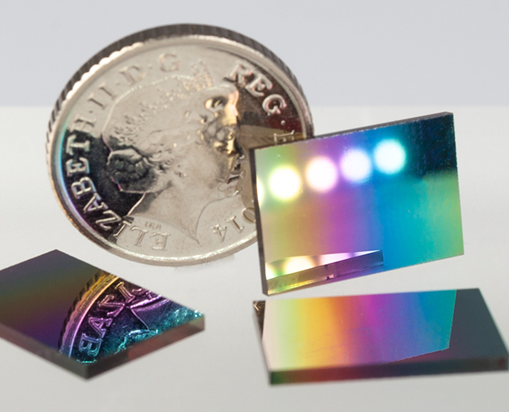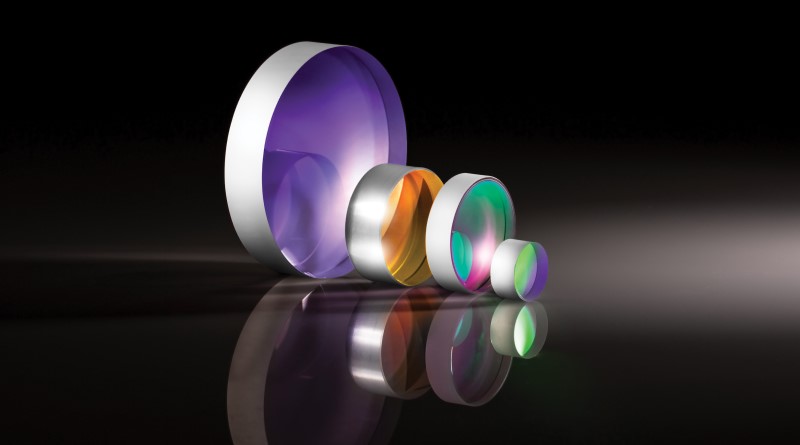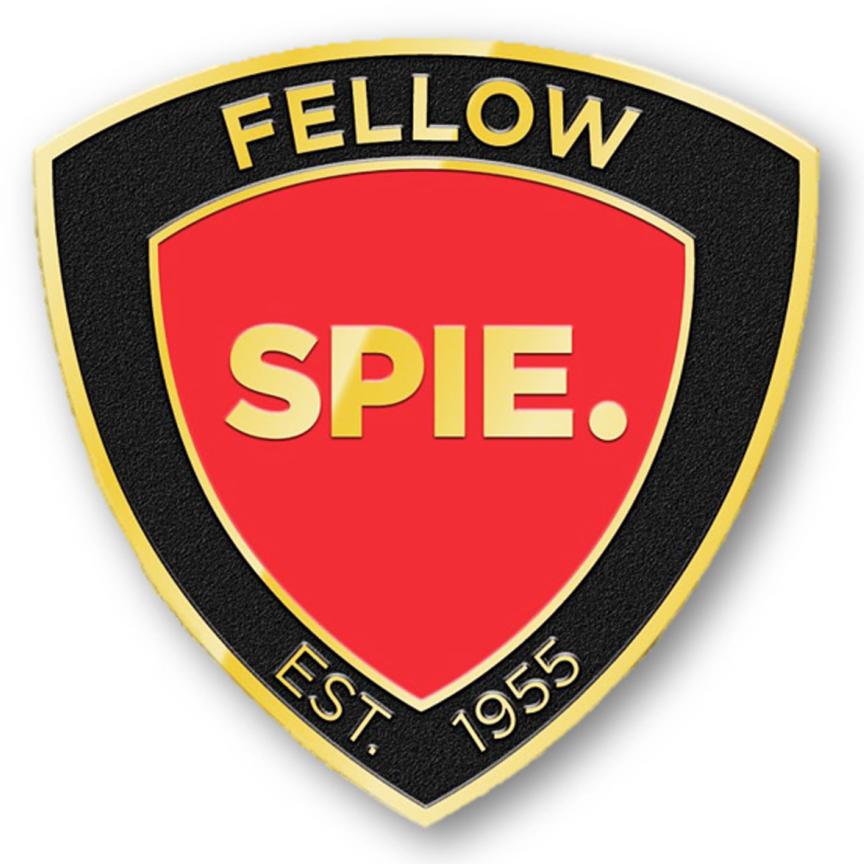Optical coatings are part of our daily lives, sneaking into much of our technology. Anti-reflection films for cameras allow better quality photographs, and cold mirrors enable us to create varying but reproducible ambience with our lighting systems.
Today, optoelectronics has come to rely on thin-films as an essential element of system design, with coatings being deployed in advanced systems such as wearable health technology in smartwatches and smartphone-based lidar systems.
Thin-films form a broad marketplace, with many different areas of application available to consumers.
The industry was estimated in 2022 to have a market value of $7.8bn, with predictions suggesting a future growth rate of 8.8% between 2022 and 2028. New applications in the environmental, health, research, and defence sectors are all providing new opportunities for thin-film manufacturers. In particular, demand for infrared optics is opening new channels for companies to explore.
Infrared horizons
“Infrared is becoming increasingly important,” says Ian Reilly, Managing Director at Vortex Optical Coatings. Vortex Optical Coatings is a thin-film coating manufacturer that produces filters for wavelengths between 250nm and 6,000nm, with a particular focus on the visible. “People used to have to pierce themselves and do a blood test. Now, this can be done with a smartwatch or in hospitals by shining light through the skin. These point of care medical applications with infrared-based technology have been bubbling along for a few years, but we are getting more and more inquiries from people wanting filters that work in that part of the spectrum.”
One of the main drivers for new growth in coatings for companies such as Vortex Optical Coatings, particularly in the infrared, is environmental monitoring. Like in diagnostic medical tests, infrared filters are necessary for determining the spectral characteristics of light emitted from harmful gases in sensing and remote monitoring.
“Demand goes up and up every year,” says Reilly. “Essentially, there are a lot of projects out there at the moment looking at gases like methane, which is much worse than CO2 in terms of environmental effect.”
Vortex cites the sorting of plastics in recycling as another potential market. The company is aiming to address questions about how reliable recycling procedures are using machine vision processes, where industrial equipment is used to see, analyse, and act, potentially reducing the need for human input.
“The key to proper recycling is being able to differentiate between all the different types of plastics that we use all the time,” says Reilly. “That is all completely solvable using infrared sensing technology. But it’s not being taken up as efficiently as it could.”
Vortex gives the example of non-recyclable black plastics, which are often mistakenly recycled, leading to contamination in the recycling process. Through infrared sensing, black plastics can easily be detected and efficiently removed when plastics are being sorted.
“There are a lot of issues in industrial monitoring and sorting plastics, and optics is the solution for them,” says Reilly. “This is going to be very important for growing business within the thin-film industry.”
Vortex says it already manufactures filters for recycling for start-ups and small-scale research initiatives, but there are larger companies manufacturing infrared detectors that are also interested in the application.
For Chroma, a thin-film manufacturer based in North America, a related area of development is machine vision. Chroma’s filters target numerous applications, currently centred on fluorescence, microscopy, and astronomy.
“We started a line of catalogue optics for machine vision around five or six years ago,” says Michael Stanley, Senior Application Scientist at Chroma. “Machine vision optics are relatively straightforward, and there are industry standards for the ‘colours’ that different factories need, mostly dependent on required detectors. Almost all of them work within human vision ranges, so most of our machine vision optics were versions of filters made for human visualisation.”
Chroma is working on optimising its machine vision filters for consumers. For this, it needs cheaper filters, lower optical densities, and higher throughput. This is in sharp contrast with the filters that Chroma manufactures for fluorescence microscopy, which need extremely high optical densities and coverage in very specific wavelength regimes. This is also an application area of relative growth for Chroma, which is working on developing filters for multiphoton microscopy.

Linear variable filters produced by Vortex Optical Coatings
“The clinical world of diagnostics is still mostly done by humans,” says Stanley. “Part of that is because there isn’t really a colour camera right now that will distinguish between colours well enough to be a diagnostic, at least not at a reasonable commercial price point.”
The drive for more sustainable technology extends beyond machine vision. Coatings for photovoltaic (PV) cells also form a major driver of demand, where increasing requirements for solar energy production is pushing coating manufacturers to increase their throughput. But innovations in coatings are also being made in research. In 2021, US researchers at the University of Rochester developed a new class of optical coatings for PVs that could potentially result in lifetimes up to six times greater for the cells. Because one of the limiting factors of PVs is cost, any reduction in replacement fees for these cells makes them more viable for a consumer marketplace. Researchers from the project say the technology could lead to a “high-performance, low-cost solution” to the biggest barriers faced by widespread adoption of solar energy.
Sputtering vs evaporations: a shift in manufacturing methods
Large-scale changes in the behaviour of the thin-film industry are not limited to applications. Manufacturing methods are also in flux. In general, either evaporation or sputtering techniques are most widely used within the coating industry, generating dielectric and metal surfaces, as well as surfaces formed from a combination of layers.
The most common coating technique is evaporation, either thermal or by ion-assisted electron beam (E-beam). Evaporated coatings have high damage thresholds, making them well suited for laser applications, but result in a lower packing density that can lead to higher losses and water-related performance degradation.
However, more and more manufacturers are choosing to shift to sputtering as their coating method. This method results in films with a higher packing density, resulting in lower straylight losses, high damage thresholds and high stability of the surface both to climate and mechanical factors. Sputtering systems are, however, more cost-intensive and provide much lower manufacturing throughput.
One such company moving towards sputtering is Chroma. “Historically, a lot of coating deposition has been done by evaporation,” says Stanley. This results, he says, in “porous” coatings, meaning water from the atmosphere can enter the coatings. “The filter edges then move around. It might be ten, or if you’re lucky only five nanometres, but that can be critical in some applications. But with sputtering you get hardly any movement at all.”
The company, like many others in the industry, has a mix of different coating techniques on offer. “We have one or two E-beam machines,” says Stanley. “Other than that, they’re all sputtered. The coatings are much tougher and there’s a lot more that you can do with them in different spectral regions.”
Global challenges
Due to the increasingly volatile economic situation that global markets are facing, several threats and barriers have also arisen for thin-film manufacturers. Companies particularly are pointing to Covid-related supply chains issues as an explanation for longer lead times for customers.
“For making something that we had no stock of from existing designs, our delivery time increased from two to three weeks before Covid, to six to eight weeks after,” says Stanley. “We’ve had some trouble getting certain glasses at the specifications that we use, and that has at times been challenging. I think everyone in the sputtering world would generally agree that we’ve all had problems with both the substrate materials and the machine parts and pieces. But at least in our case none of that has stopped us from production, it just meant that some of our more special products were slowed down for a little while.”
Stanley explains that supply chain issues were not a long-lived threat at Chroma, which has since brought its lead times back down. “In the last year we have managed to bring the lead times of six weeks back down to three or four. For a newly designed and engineered filter that we haven’t made before, that’s six weeks, whereas during the peak of Covid, it might have been three or four months.”
Instead, Stanley says the whole industry is being affected more by new working patterns, flight of technical expertise, and issues with the instruments.
“These sputtering machines are anywhere from $800,000 to $1.5m each. And a lot of them are custom made or custom designed for Chroma, and then we adapt them differently,” Stanley says. “We have had some issues with machine shops and or replacements for the machines themselves.”
Stanley explains that the industry is also being affected more by the flight of expertise from technical roles: “The real killer across the industry is that expertise is being lost – that a whole lot of people have left their jobs; they retired early, they went on to other things, they started working from home and didn’t want to return to a manufacturing facility, and so on. You can’t just magic up expertise – if you lose two senior scientists in a scientific company, you can’t just replace them and expect the company to work the way it worked before.”
Counterintuitively, Covid was not all bad for business. Stanley says it ended up driving a huge amount of growth for the company, in part because of its specialist applications to fluorescence filters. “Fluorescence is what’s used in most diagnostic instruments,” he says. “So we spent the two or three years of the Covid lockdown making millions – literally millions – of filters just for PCR machines. There were all these PCR machines sitting in closets and basements and they had to be rebuilt and needed different optics. And now people are realising they need to keep those instruments out of the closet.”
“We ended up having to hire new people,” says Stanley. “We increased in size. We bought more sputtering machines in that time period.”
This is a sentiment echoed by Vortex’s Reilly. “We had our best ever year,” he says. “And a lot of that was driven by the pandemic itself. We make the filters for gas detection in ventilators, so we were very busy. A lot of companies across Europe would tell us before the pandemic that they might make 20 ventilators the following year, but they were making thousands of machines instead.” This is, he adds, in addition to filters for PCR tests, which the company also manufactures.

Optical coatings are deployed in advanced systems such as wearable health technology in smartwatches and smartphone-based lidar systems. (Image: Shutterstock/Ground Picture)
In terms of real threats to the business, Reilly instead highlights Brexit as a leading challenge that has arisen in recent years. The transition period ending has been a particular source of problems. “Daily things just became a lot harder. The people who handle the shipping have to deal with a lot more questions, a lot more form-filling and higher costs. We’re lucky because we make a niche product, so [customers] put up with another two days’ delivery. We send things out early to anticipate the delays anyway, but it’s more work for everyone.”
The costs are not at all trivial. Reilly mentions a particular anecdote of an instrument from their company. “Before the transition period ended, we bought a machine from a company in France and one of the guys drove to France to get it. It took two days and cost €600. After Brexit it cost us €4,000 to do the same thing.”
“We’ve been lucky in this industry, some people have had to stop exporting completely,” Reilly adds. Geopolitics has had a tangible impact on Vortex overall. The company also identifies the war in Ukraine as increasing the demand for filters in defence across Europe. This intersects perfectly with issues that they, with other UK based companies, are having with shipping to other countries in the European Union, such as Germany and Poland.
With the combination of the pandemic tightening supply chains and the economic shadow cast by Brexit, it would be reasonable to think that the world of thin films was shrinking. But the industry has continued to grow, develop, and deliver new, cutting-edge and high-quality products to consumers across various industries. The drive for filters to underpin new technologies is leading the charge, with manufacturers particularly seeking optics to facilitate solutions in the environmental sector. For optical coatings, business is booming.
Sponsored: Ion beam sputtering coatings in action
Ion beam sputtering (IBS) is a powerful technology that is widely used in the production of high-quality optical coatings. IBS uses a high-energy ion beam to sputter material from a target and deposit it onto a substrate. This process creates thin films with precise control over their thickness, composition, and properties. IBS has become a popular technique for producing high-quality optical coatings, and IBS-coated optics can be advantageous in many applications including (though not limited to) laser material processing, ophthalmic surgery, and multiphoton microscopy.
Laser material processing
Pulsed lasers, including nanosecond, picosecond, and femtosecond lasers, are commonly used in laser-machining applications to process and cut a variety of different materials. Femtosecond lasers, in particular, are well-suited for laser material processing operations such as cutting, drilling, or etching, due to their short pulse lengths and high peak powers.
However, ultrafast systems such as these are particularly sensitive to optical dispersion. Even a small amount of dispersion can cause significant pulse broadening, which can lead to reduced performance in laser material processing operations. Pulse broadening increases the pulse length of a laser beam, so the material being worked has more time to absorb the laser energy, leading to thermal damage of the material. This thermal damage can cause melting, cracking, and other unwanted effects that reduce the processed material quality.

IBS coatings can help to mitigate pulse broadening effects by providing very precisely controlled coating layers. This means that group delay dispersion (the amount of pulse broadening caused by dispersion in an optical system) specifications can be achieved over a broad range of wavelengths. Additionally, compared with other coating types, IBS coatings have very low defect densities, which makes them ideal for high-power laser applications where laser-induced damage thresholds are critical.
Ophthalmic surgery
In ophthalmic surgery, precision and accuracy are critical to the success of the procedure. Procedures such as Lasik rely on the use of ultraviolet (UV) and extreme ultraviolet (EUV) light for cutting delicate eye tissue. UV light is typically used in ophthalmic surgery since it can be focused into much smaller spot sizes than other, longer wavelengths. However, the shorter wavelengths of UV light are more sensitive to scatter from surface imperfections on optical elements, which can degrade system performance.
This is where IBS coatings come in. IBS coatings, especially when combined with super polished (ultra-low surface roughness) substrates, can mitigate scatter. The rougher the surface of an optic, the more scatter there will be. The high density of IBS coatings does not negatively impact the surface roughness of the optic, making them ideal for UV applications, where scatter must be minimised to ensure precision and accuracy.
Multiphoton microscopy
Multiphoton microscopy is an imaging technique that is used for imaging of structures within and around individual cells and structures of thick biological samples. Based on fluorescence imaging, it uses near-infrared (NIR) femtosecond lasers to generate nonlinear emission signals in the visible range. The use of NIR excitation enhances the ability to image deeper into a sample, making it a valuable tool in biological imaging. Most two-photon microscopes use a laser source that can be tuned across a broad spectral range, allowing for the excitation of a wide range of fluorophores.
However, collecting the longer wavelength fluorescence signals requires the use of steep transition filters. The quality of these filters is paramount, as a high signal-to-noise ratio is crucial in obtaining accurate imaging data. The thickness and refractive index of the coating layers must therefore be precisely controlled.

(Image: Adobe Stock/romankrykh)
IBS-based filter production is highly effective for producing single- and multiband filter coatings for various applications, including multiphoton microscopy. In IBS-produced filter coatings, the transition from blocking to transmission can be well controlled and very steep, as well as highly transmissive, making them ideal for multiphoton microscopy applications. The precision and uniformity of IBS coatings allow for the design and production of filters that can achieve high transmission and low insertion loss across multiple wavelength bands, ensuring high-quality imaging data.
In conclusion, ion beam sputtering (IBS) coatings have numerous advantages over coatings made with other methods in a variety of applications. Their thin, precise, and dense layers make them more durable as a coating, and they can be controlled very precisely. IBS coatings are particularly effective for UV applications and are well suited to be paired with super-polished optics. Their high repeatability is ideal for OEM applications. Overall, IBS coatings are an excellent choice for many optics applications.
Further information: www.edmundoptics.co.uk


